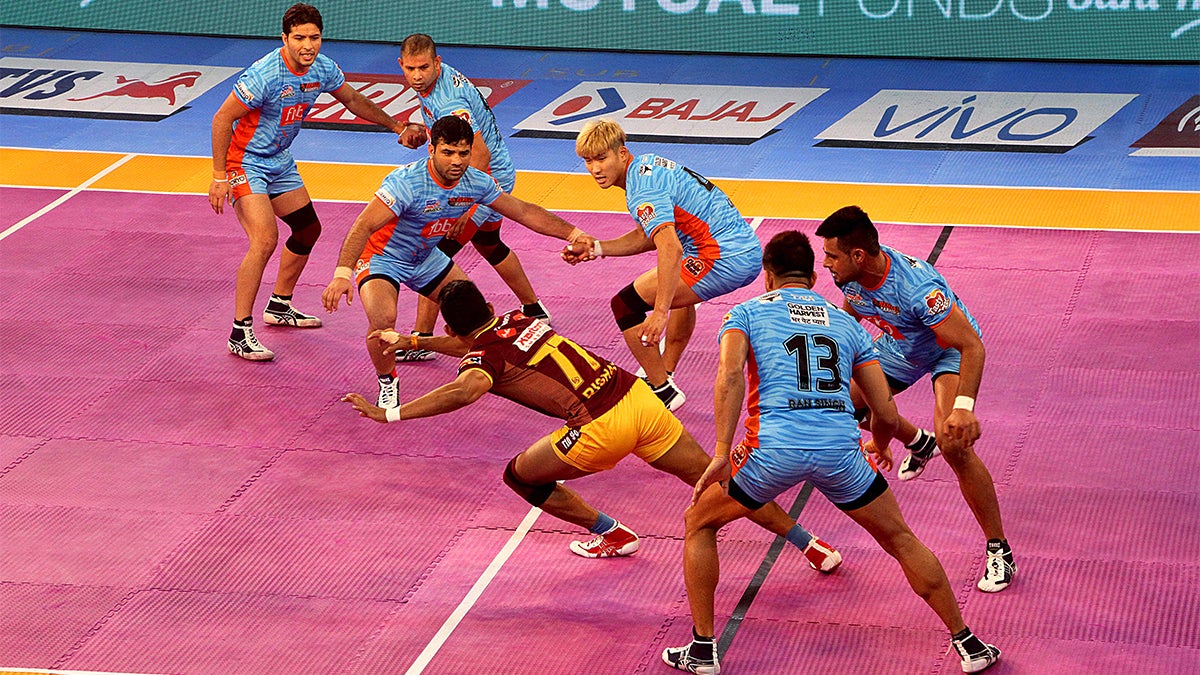Ancient game of Kabaddi is India's fastest-growing sport
The popularity of kabaddi has risen steadily over the years to the point it has become India’s second most watched sport after the Indian Premier League (cricket). After interest in kabaddi was kick-started with the 2006 Asian Games, the Pro Kabaddi League was formed in 2014.
Nielsen Sports reported interest in kabaddi has grown 14 percent year over year since 2015 and interest in the Pro Kabaddi League has grown by 33 percent.Nielsen reported consumers view kabaddi as being more modern, innovative and entertaining.
“Smart production and packaging of content on TV, alongside an innovative take on the construct, format and presentation of kabaddi has seen the Pro Kabaddi League transform how people are engaging, experiencing and enjoying the sport,” wrote Ravi Chavan, the managing director of Nielsen Sports, India. “Widespread media coverage across India, celebrity engagement and an infrastructure overhaul have all led to the increasing marketability of the league and rising audiences.”
To those first watching kabaddi with no knowledge of the rules, it looks like a grown-up, modified version of tag. Stretches of running back and forth are broken up by frequent tackling and ankle grabbing. Once observers learn the rules and understand how the game works, its sophistication and complexity become clearer.
Two 12-person teams compete with the goal of receiving the most points. On a court divided by a midline, one person, called the raider, faces seven defenders from the opposite team. Chanting “kabaddi,” the raider crosses the midline in an attempt to touch — or tag — as many opponents as possible and recross the midline before being tackled. For each player the raider touches, he earns one point as long as he is able to recross the midline. If the raider is tackled before he recrosses the midline, no points are awarded.
The history of kabaddi is murky. The general consensus is it originated in India approximately 5,000 years ago during the Kurukshetra War to help teach self-defense and hunting skills. However, others argue the sport began in Iran.
The modern kabaddi competition has been altered. The original purpose of chanting “kabaddi” was to show the referee the raid was being done in one breath and kept raids short. Today, raiders may chant out of tradition, but a 30-second clock is used to time raids. Pro Kabaddi also introduced new ways of scoring to keep the game entertaining.
Complicating matters, the above rules apply to only one form of the sport. India recognizes four forms. All have the same goals and general rules, but vary in their details.The Pro Kabaddi League, since being formed four years ago, has quickly rushed to the top of the list of most-watched sports in India. It has been a mutually beneficial run for both consumers and producers. The popularity has led to more widespread media coverage, celebrity engagement and updated infrastructure. The country also saw a rise in consumer engagement. For example, when Top Ramen sponsored the sport, the company included player trading cards with its product.
Phanindra Dahal, a Humphrey Fellow from Nepal attending Arizona State University, explained the Pro Kabaddi League is largely sponsored by Bollywood actors. Many Indian celebrities have stakes in the industry to help commercialize the sport, which sometimes politicizes the game. Outside of the spotlight, Dahal said there is no infrastructure needed for the sport. People often will create a makeshift court in a field near their town and play there.
Kabaddi fever isn’t limited to the sport’s home country. Formed in 2004, the International Kabaddi Federation includes 31 national associations. Kabaddi is the national sport of Bangladesh and Nepal. The most successful teams, according to IKF, come from India, Iran, Pakistan, Thailand and Bangladesh.
The Asian Games played a large role in keeping kabaddi alive before the recent popularity spike. The sport made its first appearance in 1982 as an exhibition event. In 1990, it was introduced as a competitive event in the quadrennial games. A women’s competition debuted in 2010. India had been the reigning champ until Iran dethroned both the men’s and women’s teams in 2018. The rivalry between the countries run deeper than scores as both claim to be the sport’s country of origin.
Season 6 of the Pro Kabaddi League will begin on October 5, and it is impossible to miss the advertisements on television, print media, radio and social media. It’s continued success in an age where everything is accessible online and videos go viral within a day raises the question: Could interest in Kabaddi spread to the west?
Nikole Tower is a senior journalism student at Arizona State University.


